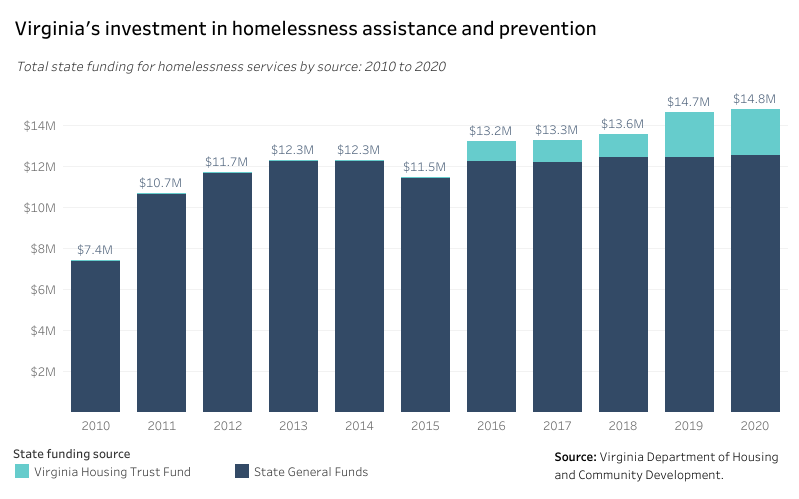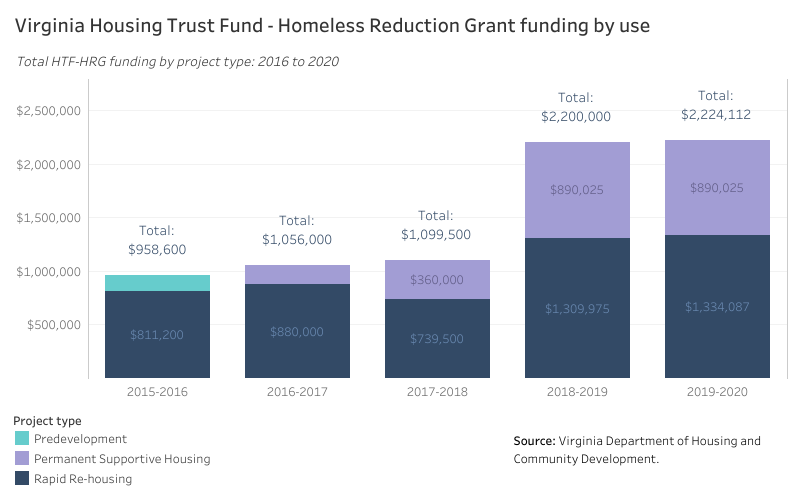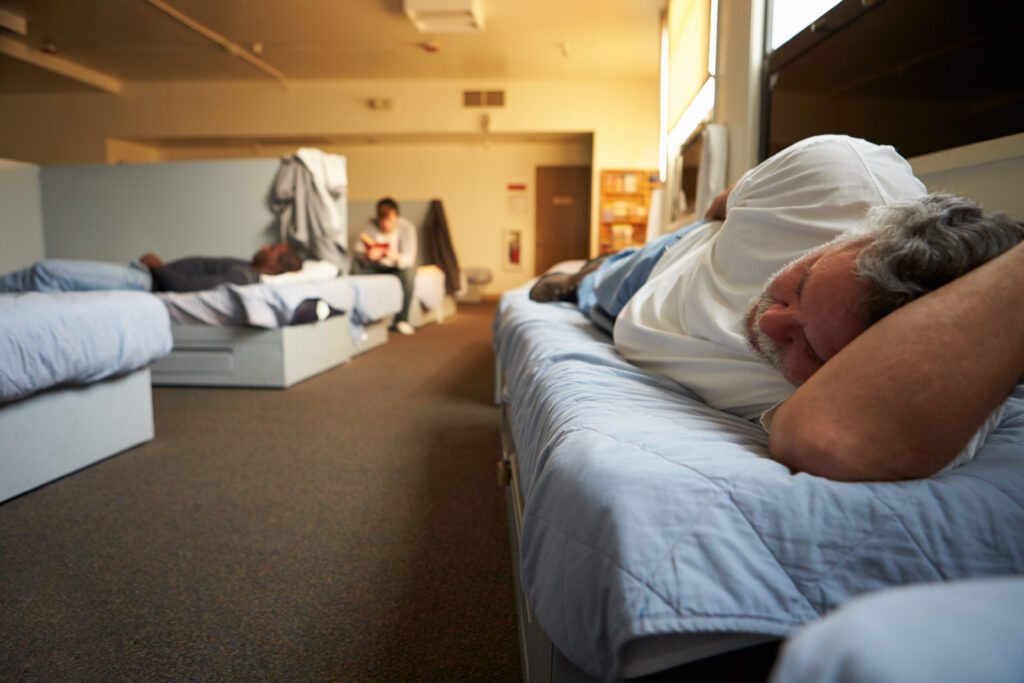Editor’s note:
This is the twelfth edition of our “State of Housing” series, which breaks down the HB854 Statewide Housing Study released in January 2022. You can find previous posts in this series here.
State of Housing #12 • 876 Words
Virginia’s programs to address housing insecurity and instability are powerful tools, but more is still needed.
The fourth part of the HB854 Statewide Housing Study includes six chapters analyzing data on existing housing programs, including substantial feedback from housers across the Commonwealth that utilize these programs. Between Virginia Housing and the Department of Housing and Community Development, there are a multitude of programs that address housing needs in many different ways.
In this edition, we’ll focus on Virginia’s homelessness assistance and prevention programs. These programs were created to make homelessness rare, brief, and non-recurring. Once again, there is a lot to digest within these chapters, so we’ll focus on some key highlights
There are several homelessness assistance and prevention programs in Virginia that aim to provide support, resources, and stable housing to those experiencing homelessness or at risk of becoming homeless. These programs are housed at Department of Housing and Community Development (DHCD), as well as the Department of Behavioral Health and Developmental Services.
Investments addressing homelessness have been on the rise.
In 2020, Virginia invested nearly $15 million into the Virginia Homeless Solutions Program (VHSP) and the Housing Trust Fund – Homeless Reduction Grant (HTF-HRG). This total was the culmination of a decade of steady funding increases, and amounted to double the annual investment made back in 2010.

Although funding has grown in recent years, the aftermath of the pandemic has had dire impacts on those most vulnerable to homelessness. The latest Point-in-Time counts are painting a bleaker picture of homelessness in the Commonwealth (with the exception of school aged children experiencing homelessness). PIT counts for the state jumped from a total of 5,957 in 2020 to 6,529 in 2022, an almost 10% increase in just 2 years. These figures represent the reversal of a decade-long trend of decreasing PIT counts across the state.
Why this matters: The pandemic shined a light on the importance of housing to public health and economic stability, but the end of pandemic protections has led to a wave of evictions and instability for hundreds of Virginians. Continued investment in successful programs like HTF-HRG and the Virginia Homeless Solutions Program will be key to getting the Virginia PIT count back on the downward trend.
Permanent Supportive Housing has been an increasing focus.
From 2015 to 2018, much of HTF-HRG funding has been utilized to support rapid re-housing. But in the 2018-2019 program year, there was an over $500,000 increase in funding for permanent supportive housing. This shift represents a clear understanding of the effectiveness of PSH and a Housing First approach to homelessness.

But housing service providers face several challenges in getting these different types of housing on the ground. One of the greatest challenges to decreasing homelessness is the lack of supply and diversity of housing options, especially deeply affordable, income-restricted and privately-owned, market-rate rentals.
The HB854 study explicitly recommended addressing this issue through increased funding of the Virginia Housing Trust Fund in order to expand its deployment of HRG funds. But it also recommended that the state encourage localities to expand local land use policies to allow for more naturally affordable housing, like Single-Room Occupancy (SRO).
Why this matters: Funding is just one piece of the puzzle. There’s a growing acknowledgement that in spite of increased funding, local regulations and NIMBY sentiment can put the kibosh on much needed housing for the most vulnerable.
Homelessness prevention involves collaboration beyond the housing world.
Survey respondents and focus group participants made it clear that homelessness prevention is more effective when those outside of housing are involved. Stakeholders outside of the homelessness system are not well informed about how homelessness assistance and prevention programs work and the people the programs serve. In addition, early identification and prevention in criminal processing, foster care, and educational systems can help individuals and families before loss of housing occurs.
Inviting stakeholders like community service boards and social services departments to join events held by groups like Virginia Housing Alliance could better inform people about available programs. Greater inter-agency communication and coordination, as well as the expansion of housing programs and planning in education and criminal justice systems could strengthen homelessness prevention.
Why this matters: Homelessness results from a multitude of factors. Early signs can arise in systems outside the realm of traditional nonprofit housing providers. But with better integration and coordination with other systems, homelessness prevention can be strengthened to lessen the pressure on Continuums of Care (CoCs).
Despite representing only 18% of the population of Virginia, one in two persons experiencing homelessness identified as Black in 2022. This disparity makes it clear that homelessness is also a racial equity issue.
But there is a glimmer of hope. Virginia previously managed to virtually eliminate homelessness for veterans. Statewide coordinated efforts like data-sharing and gap funding contributed to this success. A housing first approach has also been identified as a key contributor, reducing the length of homelessness and increasing housing stability. More of these efforts along with the HB854 study’s recommendations can help make homelessness in Virginia rare, brief, and non-recurring.
Coming up next time…
In the next edition of this series, we’ll begin exploring the HB854 study’s focused recommendations, which included a state-funded rental assistance program, utility rate reductions, and property tax reductions.
